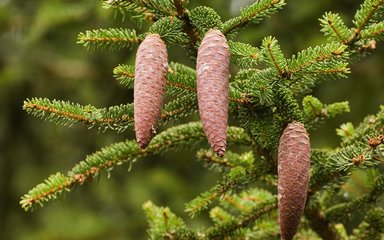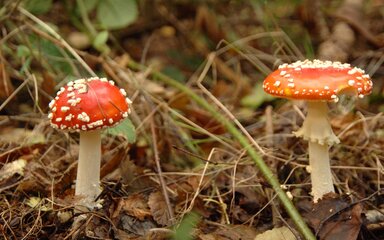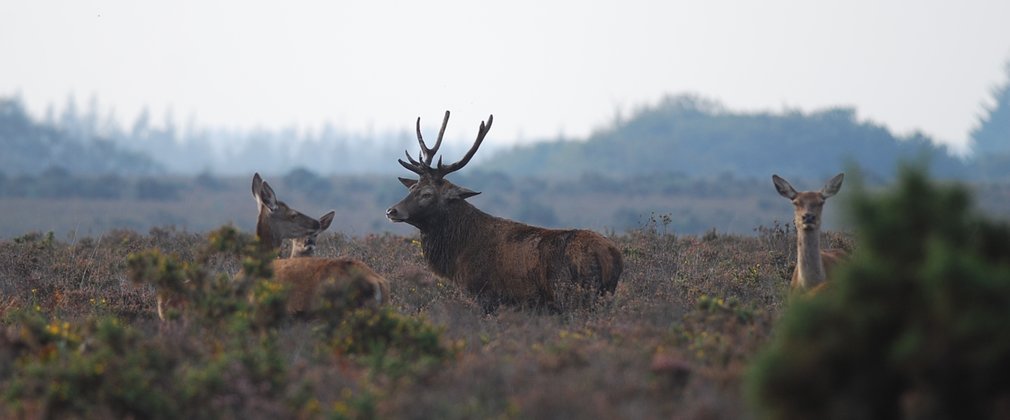
Deer are very secretive creatures by nature. In the summer they hide in long grass and thick bracken, and by winter their darker coats blend into the barren landscape. But if you know what to look for, you’ll soon discover they are all around you in the forest. Become a deer detective and get to know these majestic animals.
Tracks and signs of deer
Learning to spot the evidence of deer is a great way to find out more about their behaviour and whether they might be close by.
- Droppings: small, dark, round pellets left in piles, with no obvious smell.
- Tracks: look for hoof prints in the mud, known as slots. Deer often use the same routes, which lead to well-worn tracks that can help you spot them.
- Antlers: if you’re lucky, you may find a cast antler. Look for nibble marks, as deer and other animals gnaw on the bone for the minerals.
- Tree damage: males mark their territories by rubbing antlers on young trees. This is called fraying.
- Hair: you may find clumps of hair when deer moult out their winter coats.
- Sounds: the rutting season is a good time to hear the roars, belches and even whistles of males.
Top tips for watching deer
So you've mastered the tracks and signs of deer and you're now ready to see if you can spot one. The best times for this is dawn and dusk, when they're most active. Here are some of our other top tips:
- Bring binoculars and keep a safe distance, using a long lens if you want to take photographs.
- Deer often feed in woodland clearings and open areas, so hang back and hide your silhouette against the edge of the woodland.
- Watch deer from downwind so they are less likely to smell or hear you.
- Leave the dog at home when deer watching. Keep your dog in close control on the lead if you encounter deer.
- If you disturb deer, move back. Don’t pursue, as this will stress them and could push them towards nearby roads.
- Stay on main tracks and paths, especially during the rutting season.
- Give deer space and follow signage in restricted areas that allow deer to rest.
How to identify different species of deer
The UK is home to six species of deer. Red and roe deer are our only native species, and fallow, sika, muntjac and Chinese water deer are introduced species. They can be tricky to tell apart, so let's take a closer look below.
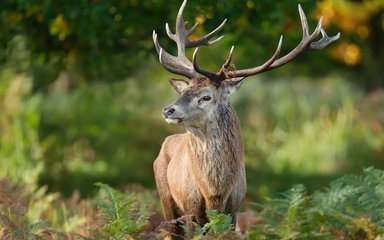
Red deer
Red deer are the largest mammals in the country. Being the largest species of deer makes them easy to tell apart from others. They have a short tail and reddish-brown coat, with a cream underbelly and rump. In the winter their coat is darker brown or grey. They have highly branched antlers with up to 16 points.
Roe deer
One of the smaller species in our forests, roe deer are more secretive than the others. They have no visible tail and a black nose with a white chin. Their coat is brown to sandy yellow, and darker brown, grey or occasionally black in the winter. Roe deer have small and simple antlers, typically with three points on each.
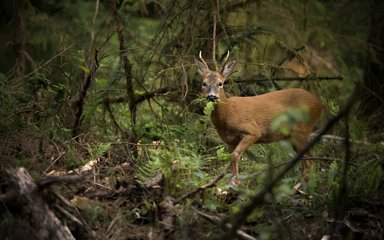

Fallow deer
Long tails are a good identifier of fallow deer. They have four different coat colour variations: the most common is a spotted, chestnut coloured coat which turns grey or brown in winter. Others are brightly spotted all year round, dark brown or almost black, or entirely white or cream. Fallow deer are easy to tell apart from other species, as their antlers are shaped like the palm of a hand with small points.
Sika deer
Smaller than red deer, sika vary from reddish brown to pale yellow brown with white spots in summer and a darker grey coat in winter. They have a distinctive white rump, and often a dark coloured stripe running the length of their back. Mature stags have four points on each antler.
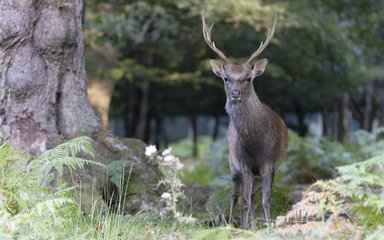
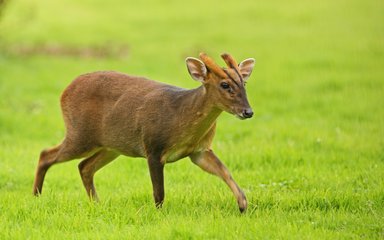
Muntjac deer
By far the smallest deer in our forests, muntjac are chestnut brown with dark face markings and small antlers. Introduced in the 20th century from China, they've spread rapidly across much of England.
Chinese water deer
They are smaller than a roe deer with large fluffy ears and a black nose. Both males and females have tusks and no antlers. These are our least common deer, thought to have escaped from safari parks in the 1900s. They mainly live in East England.
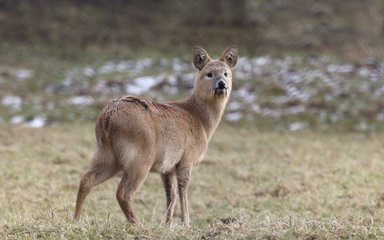
Managing deer in sustainable forests
Within properly functioning ecosystems, deer play an important role by maintaining open areas in woodlands and encouraging biodiversity. However, without any predators, large deer populations can have a devastating effect on their environment. Natural predators of deer, such as bears, lynx and wolves, are extinct in Britain and deer populations are higher and more concentrated than ever before.
Our highly skilled wildlife rangers replace the role of Britain’s missing predators by sensitively and humanely controlling deer populations in woods, working to the highest standards of safety and animal welfare. Each deer is inspected, uniquely tagged, processed and stored according to food hygiene standards to make best use of wild meat that would otherwise go to waste.


